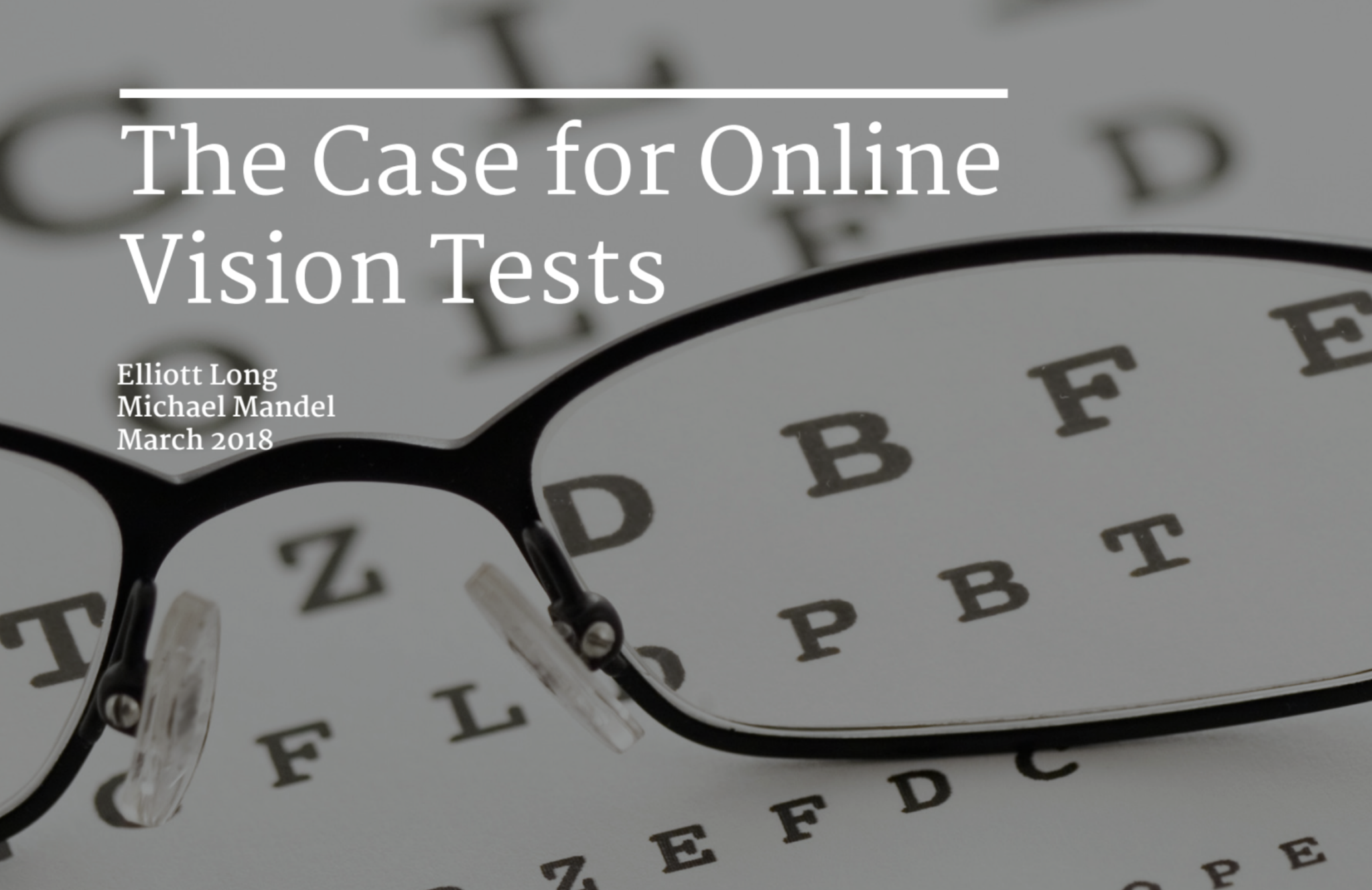PPI: The Case for Online Vision Tests

By Michael Mandel and Elliott Long –
Healthcare faces three major issues: access, cost, and productivity. Telemedicine — the use of technology to help treat patients remotely – can help address all three. Broadband allows many underserved rural and minority communities that previously had limited access to medical services to remotely access high-quality medical care. Telemedicine reduces the need for expensive real estate and enables providers to better leverage their current medical personnel to provide improved care to more people.
But, despite its benefits, there is an ongoing struggle about how to regulate telemedicine: who can practice it, what services can be delivered via telemedicine, and how it should be reimbursed. As is the case with any innovation, policymakers are looking to find the right balance between encouraging new technologies and protecting the health of patients. These are real issues. In too many cases, however, state and local legislators have erred on the side of too many restrictions on telemedicine, driving up prices and “protecting” patients from cheaper, better care.
In particular, online vision tests have come under attack in some states. Online vision tests use your computer and smartphone to assess your near and distance vision. When used correctly, they complement rather than substitute for in-person eye exams. Their main benefit is that they make it easier and less costly to get prescriptions for glasses or contacts. That’s especially helpful in states with large rural or poor urban communities. Indeed, more than 800 counties nationally have no optometrist offices or optical goods stores, according to figures from the Bureau of Labor Statistics. That’s fully one-quarter of the counties in the country.
In this report, we provide background on the health and economic benefits of telemedicine, analyze recent legislation proposed regarding online vision tests, and illustrate the impact online vision tests have on poor and rural communities.
